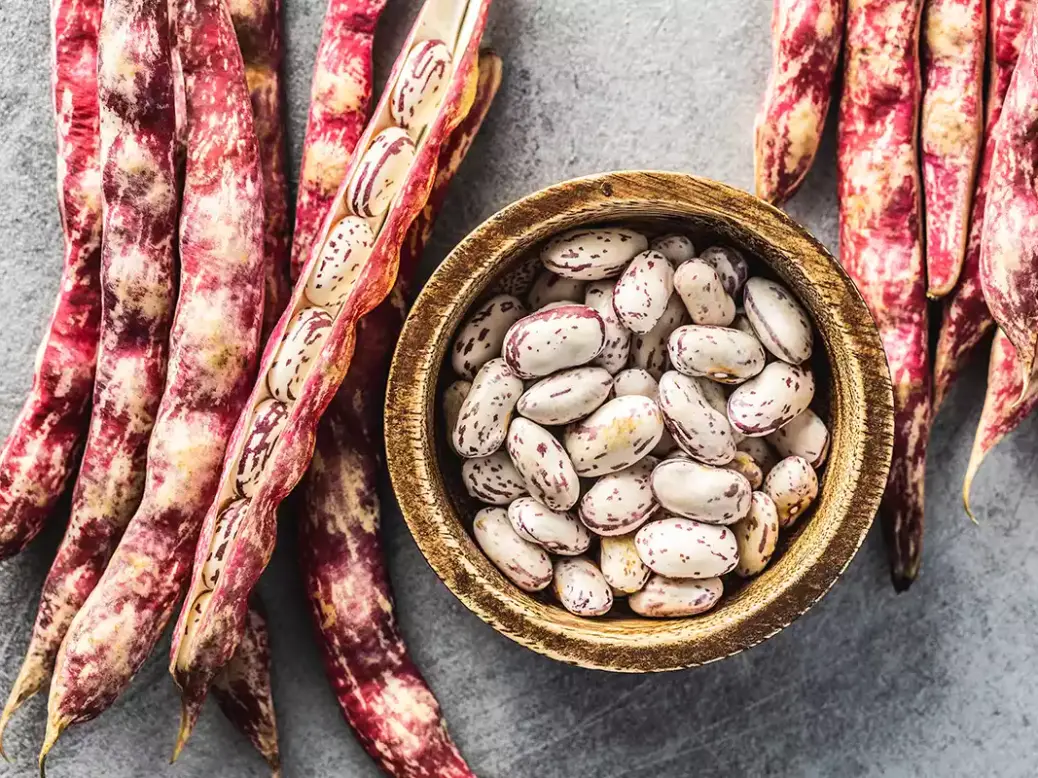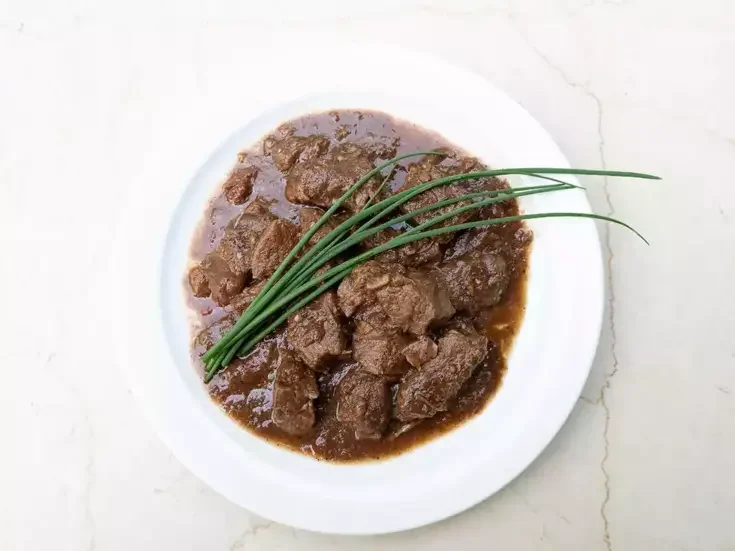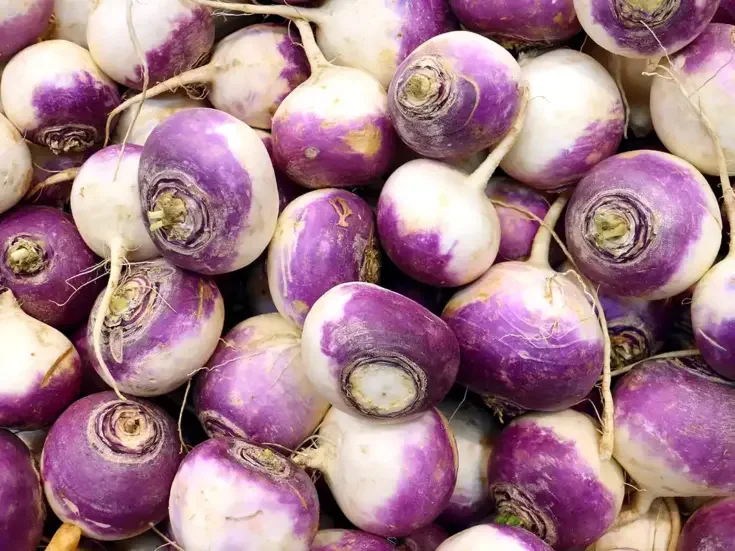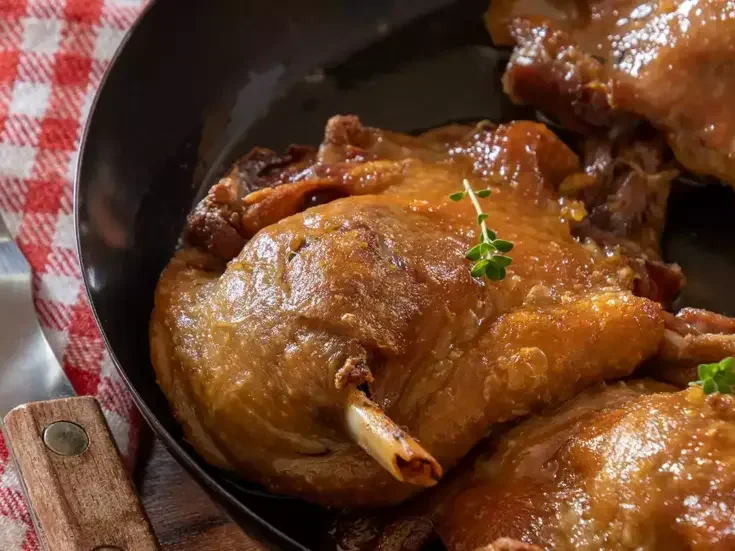
I can’t imagine that anyone ever visits Chile’s Secano Interior—Maule, Itata, and Bío Bío—without eating the vegetable stew porotos granados; probably several times in the summer when the principal ingredients, borlotti beans (aka cargamanto, cranberry beans, or Roman beans), maize kernels, and squash, are harvested. And I can’t imagine why anyone would want to. Like so many rustic, country dishes, its simplicity, its umbilical chord-like connection to the land through its native ingredients, and its timelessness make it unfailingly satisfying.
In common with other simple, country dishes the world over, there is little documentary history for porotos granados; nor is there the archeological evidence of a dish such as curanto (the subject of a previous At the Table column). There’s a recipe in a Chilean cookery book of 1911, La Negrita Doddy: Nuevo Libro de Cocina by Lawe, which was based on the recipe book of Julio Grauffé, the chef of the Jockey Club of Paris, but recipes of this sort were almost always passed on by word of mouth, not in books until later in the 20th century.
Nonetheless, porotos granados almost certainly goes way back. The Mapuche people in Chile are known to have been growing and eating beans, maize, and squash for thousands of years and the harvests of the three overlap—although I should add here that some versions of the dish are based on beans and maize alone and squash is not included.
There is greater clarity about the name of the dish, although some misinformation too. The word porotos, which is exclusively used in Chile, southern parts of Peru, and parts of Argentina, is derived from purutu, the Quechua word for bean. Granados comes from granar: to remove the seed or bean. You sometimes see beans in markets being sold simply as granados, but this is not the name of the type of bean and even less has it anything to do with pomegranate (granada).
Apart from borlotti beans, maize, and, if used, squash, the ingredients are sautéd onion and basil, stock or water, and seasoning. Fresh tomato and oregano are often included and sometimes some kind of chilli pepper, paprika, or cumin.
How to make porotos granados
Proportions and methods vary widely, but I use 450–500g cooked beans (fresh in season, dried or even canned out of season) to 300–340g peeled butternut or red kuri squash, 225g cooked maize kernels, one medium onion, and two medium-large tomatoes. I soften the finely chopped onion in olive oil then add the butternut or red kuri squash (diced into 1.5–2cm pieces) and cook until soft (adding oil or water if necessary to stop it sticking). I then break up the squash with a wooden spoon before adding the cooked beans and maize, a little diced fresh tomato, and a small pinch of chipotle meco chilli flakes (which adds a tiny touch of spice rather than heat). I cook it on a low heat for about 20 minutes, adding water or stock as necessary to produce a stew, not a soup.
I use borlotti beans for their nutty, deep flavour and creamy texture, but in Chile the more common tortola, bayo, or coscorron are often used. In Chile, the maize used is often choclos humeros (field corn), which has a lower sugar content than the sweetcorn of North America and the EU, and there is a variation of the dish called porotos granados con mazamorra in which the corn is blended to a stiff purée.
Porotos granados is often served with ensalada Chilena (tomato, onion, coriander/cilantro, olive oil, and sometimes chilli pepper) and sometimes with pebre, the salsa-like condiment, which is made with similar ingredients plus vinegar and has more of a kick.
Sometimes it’s served alongside meat, but more often it comes as a dish in its own right and, despite its few ingredients and unfussy preparation, it’s an interesting one to match to wine. Borlotti beans have a deep, slightly earthy nutty flavour and creamy, quite dense texture, while squash and maize are both sweet vegetables with textures that contrast with the beans, the squash looser and the maize more crunchy/chewy.
The wines to pair with porotos granados
Pairings can be found among all colors of wine. Skin-contact whites (orange/amber wines) with some tannin, but not too much, can play to the borlotti beans and, if made from aromatic varieties such as Moscatel or Georgia’s Kisi, can play to the maize and the squash at the same time.
Among rosés, those with a strong Mourvèdre presence usually make a good match, Bandol not least, but a more unusual example is IXSIR Grande Reserve Rosé 2023 from Lebanon (40 percent Mourvèdre, and Cinsault and Syrah 30 percent each). Among other Provence rosés, I recommend Domaine de l’Ile Porquerolle, which has a Mourvèdre component, and Château Galoupet and Château Vignelaure, which don’t. Finally, on rosé, food-flexible Tavel falls in easily with porotos granados.
When it comes to reds, light-bodied, low-tannin styles are the obvious way to go and you strike gold with the local Secano Interior wines made from indigenous País and from Cinsault. And there is South African Cinsault to add to the pool too.
Pinot Noir can also work well, as long as you avoid wines that are too overtly fruity. As I found with an exuberant Central Otago Pinot, they can jar with the dish as a whole, even if they find an echo of their sweet fruit in the squash and maize. Chile itself is an increasingly good source of the right kind of terroir-driven, sweet-fruited, but savory-edged Pinots, from Leyda, Limarí, San Antonio Valley, and newer, further frontiers. To give just one example: Tabali’s Talinay from Limarí. In Burgundy, I would look to the Hautes Côtes de Nuits, or a Bourgogne Rouge from a producer such as Domaine Agnès, Didier, and Florent Dauvissat.
An alternative to light-bodied, low tannin reds is Primitivo—not the renditions with clumsy oak and residual sugar, but more elegant (even if still high in alcohol) wines from the subzones of Manduria and Gioia del Colle. Another southern Italian friend of the dish is Sicily’s Cerasuolo di Vittoria. I would be happy with either Feudo di Santa Tresa or the more structured Cortese, two estates under the same ownership producing very different wines.
It is easy to find a companionable white wine for porotos granados among oaked Chardonnays and blends of Rhône varieties such as Grenache Blanc and Gris, Marsanne, Roussanne, and Viognier, but it is not always easy to find a perfect pairing. Chardonnays work if they are judiciously oaked and if their fruit is tempered and doesn’t have a zesty citrus kick. The Rhône blends that work are generally those benefiting from some aromatic Roussanne or Viognier to lift the weight or fat of varieties such as Marsanne and Grenache Blanc or Gris. Another variety that can be successful is Fiano: I would recommend Luigi Maffini’s Kratos from Campania with porotos granados.







